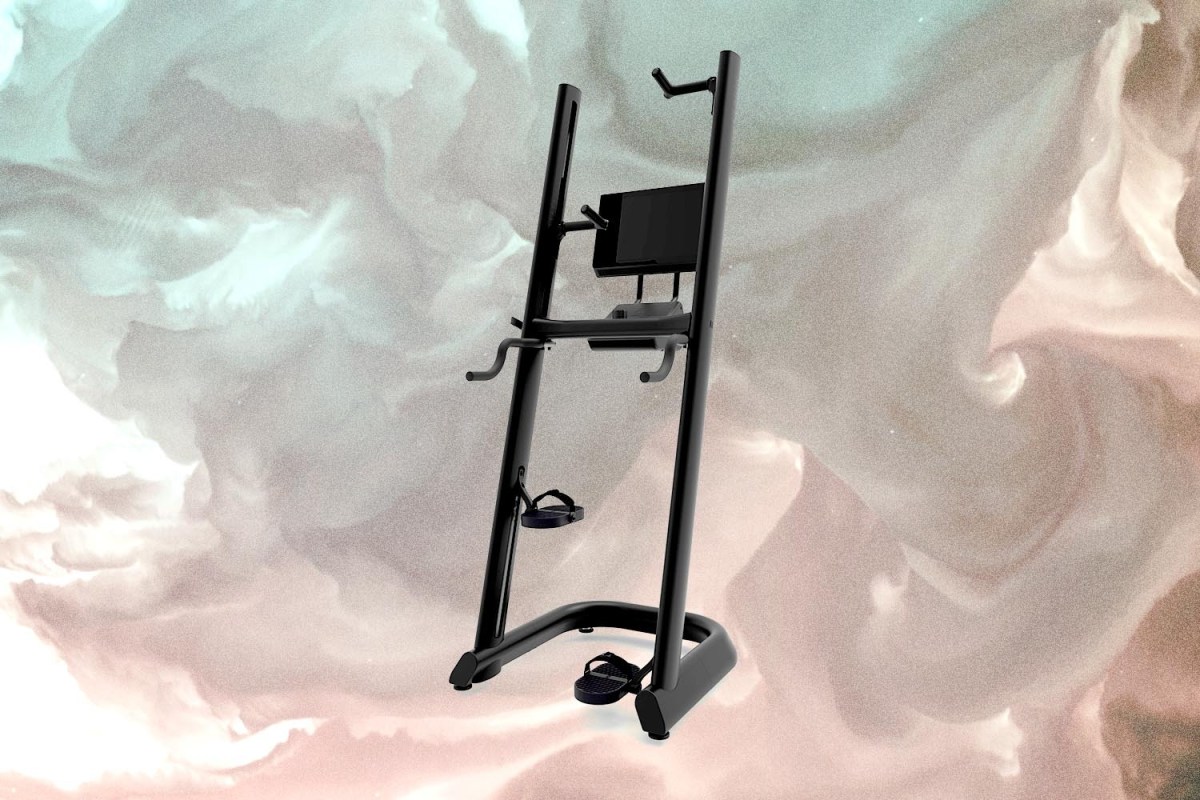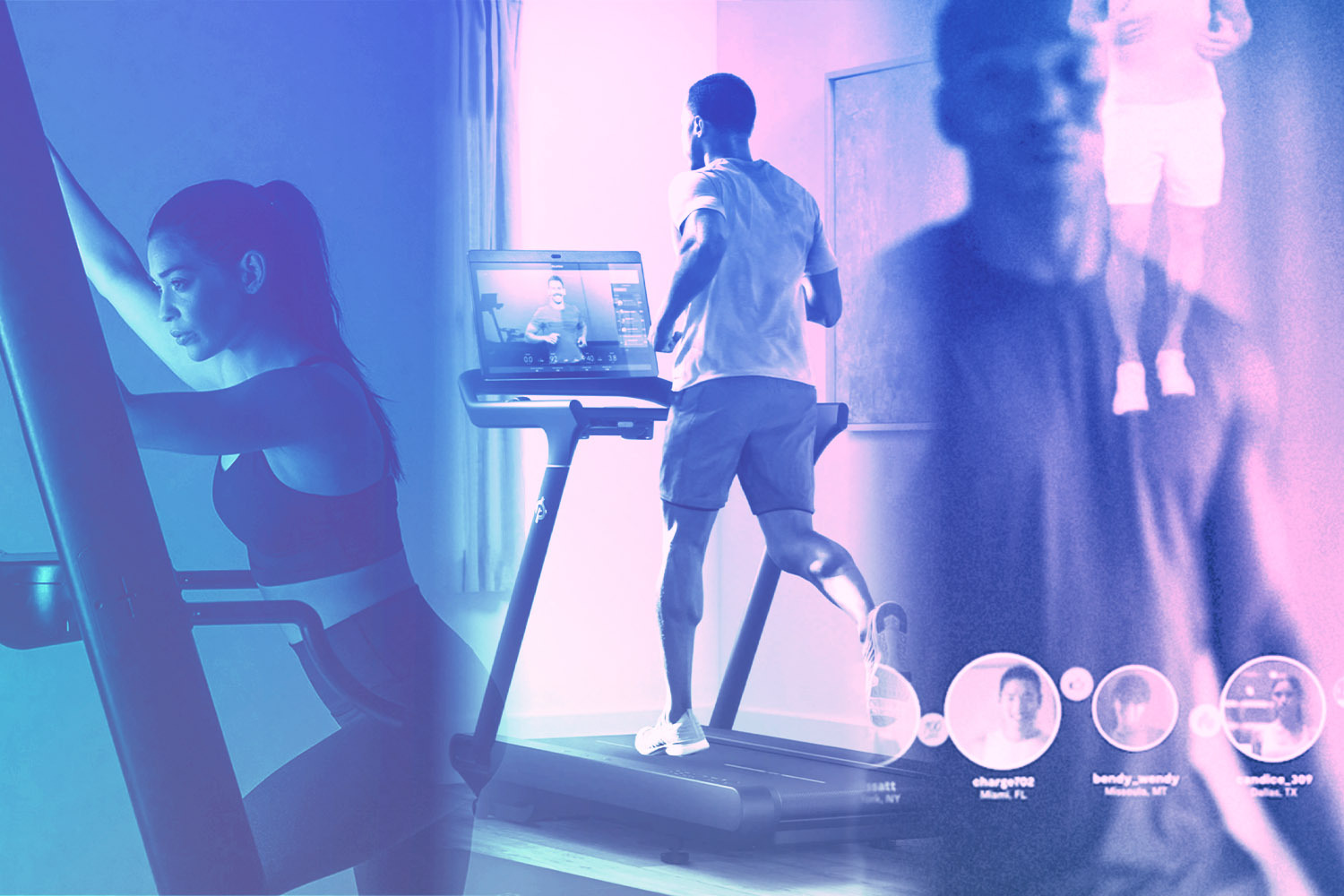Nota bene: All products in this article are independently selected and vetted by InsideHook editors. If you buy something, we may earn an affiliate commission.
By all accounts, connected fitness is here to stay — even in a post-pandemic world where interest in at-home workouts is cooling off, and most of us are headed back to the gym. Peloton, Mirror, and the many machines that they have inspired (from handsome ergs to light-up boxing apparatuses) continue to earn celebrity investments, collect hefty monthly subscriptions and watch their Instagram followings swell into the millions.
Peloton, for instance, has an annual retention rate of 92%. Nearly 100 million workouts are completed on its platform per quarter. (Some users might even be in love with one of the app’s 35 different instructors.) But just because a user keeps his membership going, doesn’t mean that he’s actually using the bike (or, at least, using it as much as he’d like). High-resolution touch screen or no, the Peloton is a piece of workout equipment. It’ll get the “laundry draped over a Bowflex” treatment at some point in its lifecycle.
Which is why connected fitness machines are a gamble, from a wellness and financial perspective. Their base cost is invariably over $2,000, then their monthly cost amounts to more than all your streaming services combined. And that’s each month, every month, for as long as you plan to stay in shape — which gets to the crux of the issue. You’re pinning your fitness hopes on a single piece of equipment. But what if you’d rather run outside, or join a martial arts class? What if your machine feels a bit too specific in its purpose? What if you just get tired of it?
An unhelpful, rich man’s answer is to simply own all the machines. Trick out a big empty space (like The Rock’s converted barn) and fill it with every connected fitness machine, so you never have to choose. You can bike on Mondays, fight on Tuesdays, row on Wednesdays, and so on. Obviously, that’s not going to happen. So if you’re determined to get into connected fitness, but you’re wary of cost, the specificity and the long-term shakiness of at-home workouts, your best bet is probably to prioritize full-body fun.
Which machine, in other words, works the most muscles in your body? What sort of workout can you not get from the common area at your gym? And what’s going to inspire you to keep saddling in, two years after delivery day? There are no guarantees when it comes to fitness — personal preference reigns supreme — but one of the space’s newcomers, CLMBR, could be the answer to a number of those questions. Christened “Peloton for climbing,” the Denver-based brand recently hosted me at a showroom in SoHo, for a demo of their intriguing new vertical climber.
I didn’t really understand one of CLMBR’s early taglines — “Where primal movement meets state of the art design” — when news of the brand’s launch first started making waves around the wellness community a year ago. It sounded like typical social media fluff. But after getting to play around with the machine for a bit, the concept immediately crystallized. CLMBR is tapping into a fitness principle that’s both ancient and on-trend: humans are best served when they return to their roots and move about like animals. The vertical climber’s clever design making doing so as painless as possible.
When you strap into CLMBR and start pumping the handles up and down, you’re simultaneously “hanging” (remember the magical benefits of arboreal locomotion?) and “crawling” (today’s trainers consistently pump ground movements into workouts, in the form of bear crawls, side gorillas and sit-thrus). In other words, you’re performing natural movements that you didn’t need to be told to do as a child, but likely lost in the shuffle of adult life. Consider: if CLMBR were inverted 90-degrees and facing the ground, you’d just look like you’re moving across the ground.
But, of course, it’s all packaged with a bit more elegance than that. CLMBR has an extremely ergonomic design (notice the lack of a meddlesome central shaft, which you’ll find on most vertical climbers), which allows a trainee to get busy sweating without stressing about noisy, slow-moving parts. The handles adjust at one-inch increments to fit perfectly with your height; the strapped/textured foot pedals make it impossible to fall out of the machine; and the machine sources top-line materials throughout, like Kevlar-reinforced belts.
Then, there’s the hi-def display and resistance knob, which is where the Peloton comparisons really start to resonate. CLMBR appears intent on building out its own library of online content, allowing at-home trainees to toggle between eight different trainers. They have different styles, but they’re all capable of instructing any class — from shorter 15-minute sprints to 45-minute long-distance climbs, to sessions centered entirely around a genre of music. There isn’t too much deviation from the Peloton model — if you’re building a connected fitness platform, why would you? — except CLMBR plans to film its classes in batches, as if dropping seasons on Netflix. The first season was already filmed at the brand’s home studio in Denver. (A second studio is currently under construction in New York.)
For those who’d rather not take classes with an instructor, CLMBR is leaning hard into, well, climbing. It’s a no-brainer play; users can scale El Capitan, summit Mount Everest and “free climb” their own customized mountain, which will save itself (elevation data, resistance points, etc) and allow for future ascents. CLMBR seems to understand its market. They aren’t chasing actual climbers — the type who belong to climbing gyms, or depart at dawn with ropes and chalk every Saturday morning. The idea is catch the eyes of those looking for a calorie-burning, functional, full-body fitness play.
Which is exactly what it is, believe me. To properly propel the handles up and down and stay suspended in the air, you’re holding your whole body up with your core. That’s how the pedals manage to hover over the ground during the workout. So: your legs are pumping, your arms are reaching and your core is fully engaged. With other connected fitness machines (Peloton, especially) it’s possible to get through a class — and even crush a class — without caring much for proper form. It can hurt your back over time, and do damage to your pelvic floor. But that isn’t possible with CLMBR.
For all of CLMBR’s novelty, though, its founders, and investors (which includes the likes of Jay-Z and Novak Djokovic), are also banking on its versatility. The machine is a unicorn, but it’s also a dependable TV screen, with trainers who can run you through circuits off the vertical climber. This has become an imperative for connected fitness platforms, as they march from a pandemic-era, at-home gold rush to an uncertain future. Trainees should also have access to videos that make them do squats, basically.
I was impressed with CLMBR. It’s creative, well-made and fun. And if you stick with it, there is not a shred of doubt in my mind that it’s very good at getting people into great shape. (CLMBR contends that its workouts will help you burn 60% more calories than you would running or cycling. I can’t confirm that stat, but I wouldn’t bet against a half hour on that thing.) Still, is the machine worth nearly $3,000, plus a monthly membership of $40? That’s poking at a larger, murkier question surrounding how we see ourselves (how you see yourself!) working out over the next few years and beyond.
For those who have that answer, and want one of these in their basement or garage, stat, head here. Most deliveries ship within four weeks.
We've put in the work researching, reviewing and rounding up all the shirts, jackets, shoes and accessories you'll need this season, whether it's for yourself or for gifting purposes. Sign up here for weekly style inspo direct to your inbox.


















